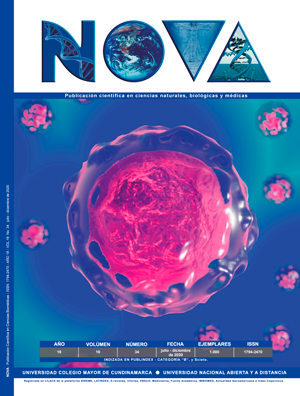NOVA por http://www.unicolmayor.edu.co/publicaciones/index.php/nova se distribuye bajo una licencia Reconocimiento No Comercial- Compartir igual
Así mismo, los autores mantienen sus derechos de propiedad intelectual sobre los artículos,
Declaración de privacidad.
Los nombres y las direcciones de correo electrónico introducidos en esta revista se usarán exclusivamente para los fines establecidos en ella y no se proporcionarán a terceros o para su uso con otros fines.
Survival of Human Fibroblastic Cells in the Absence of Supplementation
Introduction. Gingival fibroblasts (GF) are cells of gingival connective tissue that have taken promising relevance in recent years due to their probable use in cell therapy, given their multipotencial and self-renewal capabilities. Objective. To know and to describe the impact of the absence of Fetal Bovine Serum (FBS supplementation on the survival of gingival fibroblasts in cultures. Materials and methods. Gingival fibroblasts were isolated from gingival tissue of healthy patients and cultured in DMEM (Dulbecco’s Modified of Eagle Medium) culture media in absence and supplemented with 0.2% FBS at 37 ° C in a humid atmosphere with 5% CO2. A morphological evaluation, survival and proliferation of GF were carried out, as well as the identification by the immunofluorescence technique of cellular cytoskeleton markers such as actin and mitochondria. Results. The GF grown in the absence and with supplementation of 0.2% FBS showed a fusiform shape, with oval nuclei and numerous cytoplasmic extensions during the culture time. A slight increase in the proliferation of GF was observed in those cells in contact with the DMEM medium +0.2% FBS compared to the medium where the supplementation was absent. Immunostaining of actin and mitochondria showed that the absence and supplementation to 0.2% of FBS did not affect its location in the evaluated. Conclusion. Gingival fibroblasts survive and proliferate in the absence of FBS, preserving their cellular morphological characteristics.









